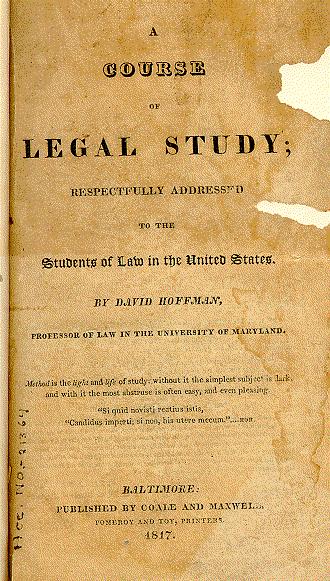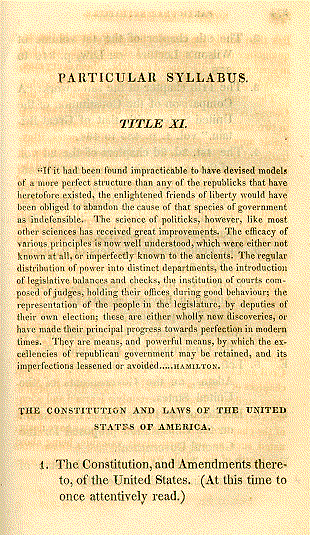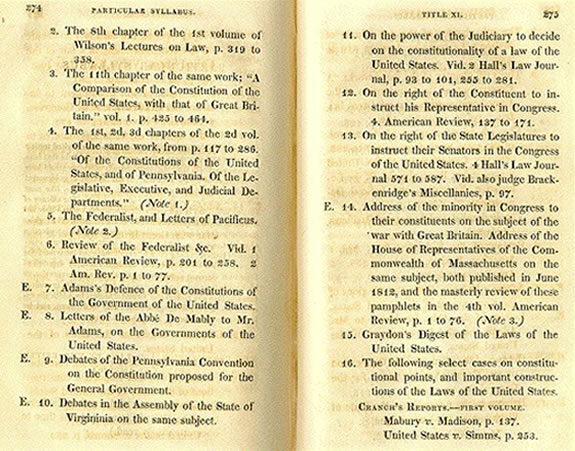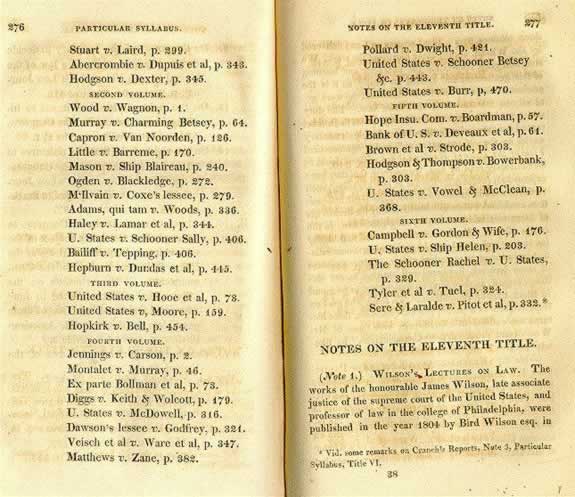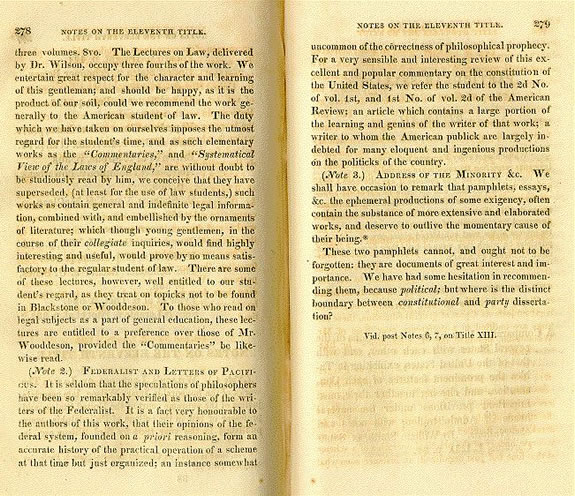
David Hoffman and the Science of Jurisprudence
A Course of Legal Study, 1817
1817 - In 1817 David Hoffman completed the massive synthesis of Anglo-American law that had been occupying his life while not teaching or practicing law. Hoffman's goal in organizing his work was to create a true "science of jurisprudence" that would include not only law but moral philosophy, history, economics and literature. The method he had crafted would "reclaim the time and labour thus often and unprofitably expended" by law students who chose other methods of instruction. Realizing that his thirteen titles and four auxiliary subjects would demand a great investment of time and energy from students, Hoffman attempted to make the demands of his course more palatable by reminding his potential audience that their efforts would produce not only a better lawyer but better personal habits:
Notwithstanding the seemingly great extent of this course, (and certainly we cannot flatter the student with the hope of mastering it with the degree and kind of attention which is usually bestowed on it) let him not be discouraged. What necessarily proves difficult to the desultory and immethodical reader, who comes to his books in the intervals of idleness or dissipation only, and resumes with reluctance what is willingly abandoned on the first call of pleasure, or the first apology of relaxation, may, by a temporary exertion of method and attention, be converted first into a habit, and eventually into a pleasure.
Sticking to the course of study, despite the hardships it presented, was paramount, in Hoffman's opinion, if the student were to succeed. However, the student, and by this Hoffman meant both practitioners and students of law, should not be so possessed of a "zeal for study" that they would be caused "to neglect the interests of the few clients they may have." Financial concerns were always foremost on Hoffman's mind and would remain a concern throughout his career.
Title Eleven, reproduced below, represented what Hoffman saw as the essential components of American law in 1817. He included portions of the Federalist, John Adam's Defence of the Constitutions of the Government of the United States, and Marbury v. Madison in his readings.
In the 1836 edition, Hoffman expanded Title Eleven to include "Mr. Story's Commentaries on the Constitution of the United States" while many of the individual constitutional readings by James Wilson were moved to a miscellaneous section at the end of the chapter. New cases that were added included many of the cases studied in today's constitutional law classes: Martin v. Hunter's Lessee, McCulloch v. State of Maryland, Dartmouth College v. Woodward and Cherokee Nation v. State of Georgia. Perhaps reflecting a change of heart on Hoffman's part, he also added Fletcher v. Peck to his list of important cases to be studied. This case, which was decided in 1810, would have been available to him at the time of his 1817 publication but was not included in the first edition.
Cover Page | Page 273 | Page 274-275 | Page 276-277 | Page 278-279
